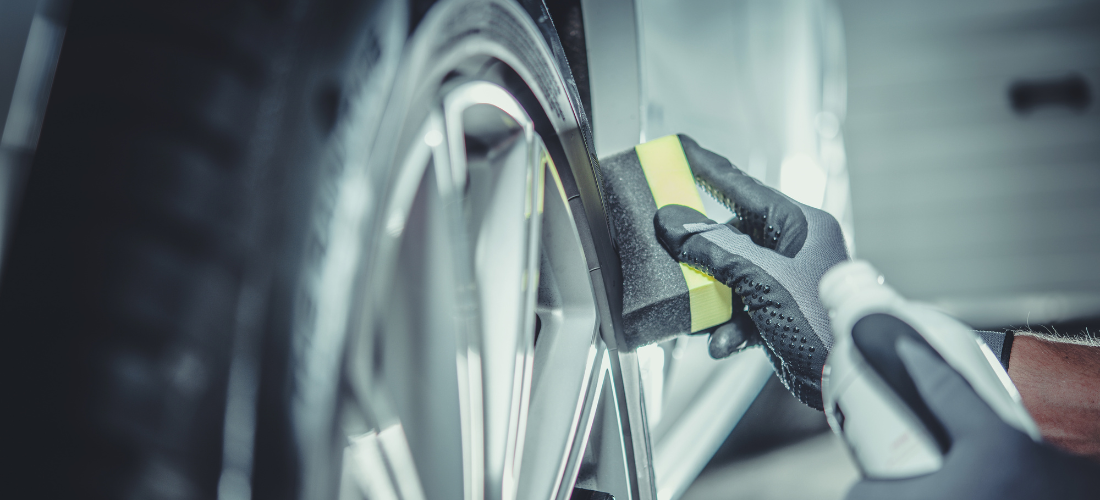Wheels and Tires at Trail Tire
February 15, 2023
Wheels

Wheels and tires are among the most important components of the car. You need them to be able to get from point A to B. What factors do you consider while shopping for wheels and tires? There are many things to consider when buying new wheels and tires. Obviously, size and style are important, but you must also consider other factors. For example, what kind of driving do you do? Do you need all-season tires, or can you get away with a summer set?
If you’re not sure which combination is right for you, don’t worry. We’re here to help. In this article, we’ll go over the basics of wheel and tire sizing and the different types of tires available. We’ll also give you tips on choosing the right set for your needs. So whether you’re in the market for new wheels or just looking to switch up your current setup, read on for all the necessary information.
Are Wheels and Tires the Same?
Although the words “wheels and tires” are occasionally used together, they are not always the same. Wheels are the rims on which tires are mounted, while tires are the rubber ovals on the rim.
There are various types of wheels and tires on the market, and it can be confusing to know which ones are right for your car. Here’s a breakdown of the different types:
Types of Wheels
Wheels come in two main varieties: steel and alloy. Steel wheels may be the least common wheel today and are usually the cheapest. Alloy wheels are more expensive but lighter and stronger than steel wheels. They’re also more corrosion-resistant.
Today’s majority of new vehicles have alloy wheels. Since the wheels are formed of steel alloy, a combination of steel and another metal, they are composed primarily of steel. Alloy wheels are more aesthetically pleasing in the eyes of most motorists, and they are popular on many different types of cars when they are aftermarket.
Types of Tires
Rubber ovals called tires are used on wheels to protect them and to provide appropriate traction for the car. The motorist will be able to manage the car with ease if it has adequate traction. Every tire model uses a unique rubber blend with varying stiffness and temperature resistance.
Both tire sizes and tire types come in a wide variety. The seasons in which these various tire types should be utilized are typically used to classify them. For instance:
- Winter tires are installed during snowy months.
- All-season tires can be used in regions that do not have extremely cold winters throughout the year.
- Summer tires are used in warm conditions as they do not provide enough traction during winter.
Factors to Consider When Choosing Wheels and Tires
Tire and wheel replacement is not only necessary in emergency situations. You don’t have to wait until they are completely worn out to change them. Getting personalized wheel and tire sets can significantly improve the aesthetic appeal of your vehicle. There are numerous alternatives available to you for styling your car. When it comes to choosing wheels and tires, there are a few things you’ll need to take into consideration:
Wheel Material: When purchasing a new set, the wheel material is the main thing to consider. Most automotive wheels on the market today are either steel or alloy.
Wheel and Tire Size: size is the next thing to think about while looking for wheels and tires. Cars with 17 and 20 inches diameters are the most typical OEMs tire sizes. Typically, replacement tires are between 15 and 17 in diameter.
Speed Rating: Your speed rating is indicated by the final letter on your tire’s label. For example, if your tire’s label reads P197/40R15/V, your speed rating is V. On the speed chart, which is shown below, this letter will correspond to a particular speed. In general, stronger grip and braking power come with a higher speed rating, but less-lasting treads do as well. It could be worthwhile to choose tires that can tolerate driving at a greater speed and replace them more frequently if you intend to drive quickly.
Speed chart:
- Q – 160 km/h
- S – 180 km/h
- T – 190 km/h
- U – 200 km/h
- H – 210 km/h
- V – 240 km/h
- W – 270 km/h
- Y – 300 km/h
- (Y) – Above 300 km/h
Other factors: Load rating, offset, width, diameter, tire profile, tire profile, treat pattern, and manufacture warranty.
What Are the Benefits of Getting a New Set of Wheels and Tires?
There are a few reasons why you might want to consider getting a new set of wheels and tires. Perhaps your old ones are starting to show their age, or you’re just not happy with how they look. In any case, here are some of the benefits you can expect from a new set of wheels and tires:
New Wheels:
- New wheels can give your car a new look and improve its performance.
- They’re also a great way to upgrade your car’s appearance without spending much money.
New Tires:
- Tires are one of the most important components of your car and should be replaced regularly.
- New tires can improve your car’s handling, braking, and fuel economy.
- They can also help protect your car against damage in an accident.
What Are the Best Wheels and Tires for My Vehicle?
Choosing the best wheels and tires for your vehicle is a major decision—after all, these parts of your car will affect how it looks, handles, and is safe on the road.
The first step is to check your vehicle’s owner’s manual to determine what size and type of wheels and tires you need. After that, it’s important to consider factors like cost, fuel efficiency, terrain type, weather conditions, and more.
For instance, winter tires might be optimal in cold climates but unnecessary in warmer climates. On the other hand, all-season tires can be great for general performance, but they don’t offer as much traction on wet or icy roads. Consider what you will be using your vehicle for before making a decision.
Finally, check online reviews of different wheel and tire brands before making a purchase—this could help you discover potential quality issues or other user experiences that might alert you to potential buyer’s remorse later on.
What Should I Do if My Wheels and Tires Need to Be Repaired or Replaced?
If you ever notice that your wheels and tires need to be repaired or replaced, the best action is to take your car to a mechanic. Even if you’re somewhat handy with tools, this isn’t something you want to DIY because it’s complicated and requires a certain level of skill.
Our mechanics at Trail Tire will inspect the wheels and tires, take measurements, check for excessive tire wear, and make adjustments as needed. They’ll also check the wheel alignment to ensure your car is running straight and true.
They may sometimes recommend replacing your tires or wheels altogether if they find any major damage. If this happens, they can help you choose replacements that fit your car’s make and model—and come within your desired budget.
Best Practices for Wheel & Tire Maintenance
Taking the proper steps to ensure your wheels and tires are in peak condition is essential for safe driving.
First, you’ll want to ensure your tire pressure is at the right level by periodically checking it with a tire pressure gauge. Too little and your fuel efficiency will be impacted; too much and your tires will wear faster due to increased friction. You should also keep an eye on the tread depth of your tires with a tread depth gauge, replacing them when their depth dips below 2/32 of an inch.
It’s important to remember that wheels are not made to last forever, so they should also be inspected regularly. Look for signs of rust, broken or missing lug nuts, uneven wear patterns, or any other irregularities. If any issues arise, it’s best to get them taken care of quickly to avoid costly repairs.
Finally, always practice safe driving habits like following the speed limit and avoiding potholes whenever possible. Both will go a long way in preserving the life of your wheels and tires.
Final remarks
Replacing the wheels and tires is a fantastic method to upgrade your car’s appearance. The type of wheel and tire you currently have and its size and offset must all be considered when purchasing a new pair. It is great if you maintain its original specs as much as possible. If you decide to stray from it, just be aware that it can affect your car’s performance. However, this is readily avoidable by performing a quick balance to make sure your car runs smoothly. Shop Wheels and Tires today!
Back

